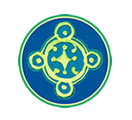Interview with Besim S. Hakim
Besim S. Hakim’s response to the question: “BUILDING BEAUTY IS AN EFFORT TO LEARN ABOUT THE BEAUTY THAT MAKES A DIFFERENCE IN THE REAL WORLD: WHAT IS YOUR WORK GOING TO CONTRIBUTE TO THAT?”
During the Fall of 1975 I and ten of my senior architecture students spent nine weeks in the village of Sidi Bou Sa’id located 16 kilometers north of Tunis the capital of Tunisia. The village is beautiful and when confronted with documenting the work that the students undertook during their stay, it became obvious and necessary to articulate the reasons why the village was determined to be beautiful. At the time of working on the first edition of the study, published in 1978 and re-issued in 2009 (Hakim, 1978, 2009) I became aware of the book A Pattern Language (1977) by Christopher Alexander and other colleagues which suggested that the existence of many of the patterns in a built environment would ensure a high quality and thus achieve beauty. Of the 253 patterns in the book, 92 were found to be embodied in the village and of those 27% related to the village scale and 73% to the building scale and related construction details. The results are documented in the Conclusions chapter of the book, pages 142-152. What is important to note here is that the people who were involved in building, since the thirteenth century, did not identify specific patterns as documented in APL but were a part of the generative process that shaped the village and addressed the challenges of growth and change.
I have documented the workings of the generative process in (Hakim, 1986, 2007, 2008, 2014). My work in addressing the question of beauty is at the level of the neighborhood, town and city. The work is directly useful for providing the knowledge and insight for developing the structure of a generative process that is designed for particulars of a specific project and/or location, such as revitalizing an existing historic town or site, developing a new neighborhood, or repairing existing neighborhoods.
Hakim, Besim S. (Editor, 1978, 2009). Sidi Bou Sa’id, Tunisia: Structure and Form of a Mediterranean Village, re-published in 2009 by EmergentCity Press and available from the online bookseller: Amazon.com.
Hakim, B.S. (1986). Arabic-Islamic Cities: Building and Planning Principles. Kegan Paul International, London. Second revised edition, 1988. Paperback edition, 2008.
Hakim, B.S. (2007). “Generative processes for revitalizing historic towns or heritage districts”, Urban Design International, Vol. 12, No. 2/3, pp. 87-99.
Hakim, B.S. (2008). “Mediterranean urban and building codes: origins, content, impact, and lessons”, Urban Design International, Vol.13, No.1, pp. 21-40.
Hakim, B.S. (2014). Mediterranean Urbanism: Historic Urban/Building Rules and Processes. Springer, Dordrecht, Heidelberg, New York, London.
Hakim, B.S. (Editor, 2017). Rules for Compact Urbanism: Ibn al-Rami’s 14th Century Treatise, EmergentCity Press. Available from the online bookseller: Amazon.com.
There are three files from Christopher Alexander’s writing that I would like to point out and whose contents overlaps with my research and findings of traditional towns and cities. These files are:
-- “Sustainability and Morphogenesis: The Rebirth of a Living World” (2007/2008) published in Structurist, nos. 47/48, pages 12-19. The first (page 12) is attached. This page provides a definition of the term Morphogensis: ‘it is the process by which organisms are shaped, by growth. In particular, it is the process by which embryos grow into organisms’. An aspect of Morphogenesis is the working of the Generative Process that underlies the process of growth.
-- “What is an Unfolding?” (2006). Available from livingneighborhoods.org. 5 pages. Unfolding is a dynamic process, and it has an underlying feature that Alexander describes as structure-preserving transformations that is embedded in the particulars of a locality, and becomes operational by the input of the people doing the work and the process preserves the wholeness of the built environment that emerges. The results will be unique to each locality and situation.
-- “Generative Codes have evolved from Pattern Languages, but are much more sophisticated generating systems” (2006). Available from livingneighborhoods.org. 2 pages. Alexander defines the term Generative Codes as a system of unfolding steps that enable people in a community to create a wholesome and healthy neighborhood. The steps are governed by rules of unfolding that are not rigid, but depend on context, and on what came before. The rules work in a way that is similar to the rules that nature follows to unfold an organism or a natural landscape, much as genetic codes unfold embryos.
